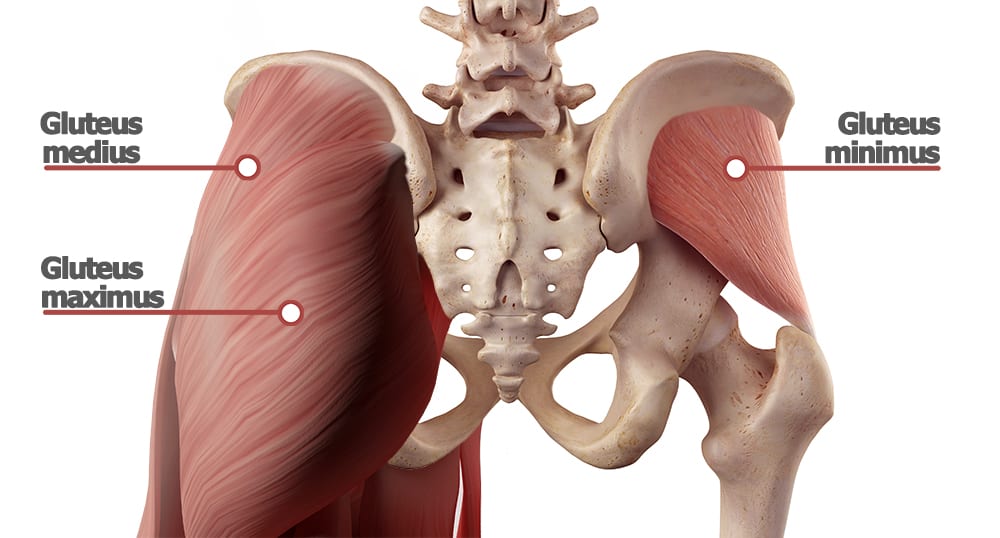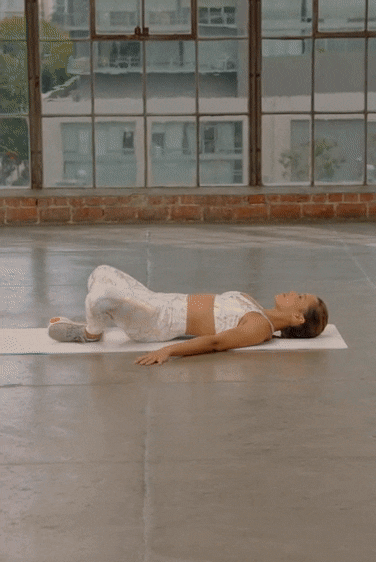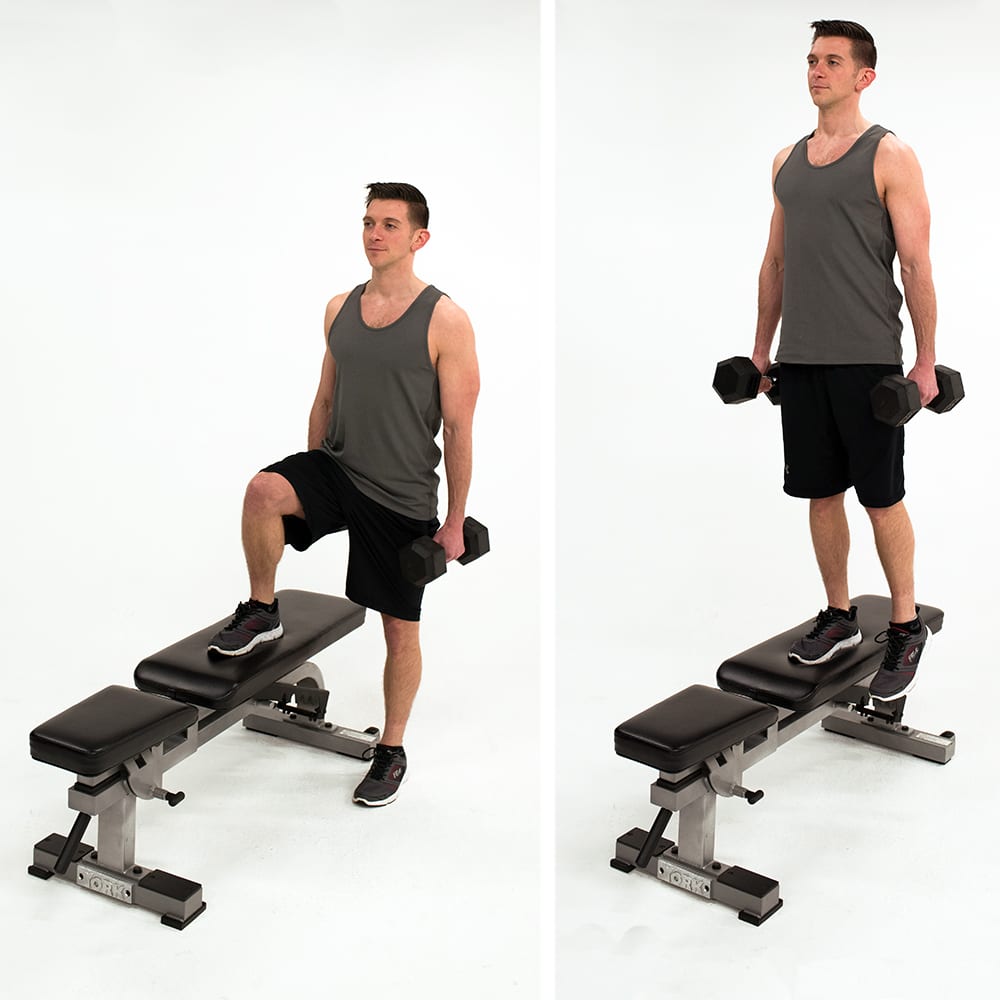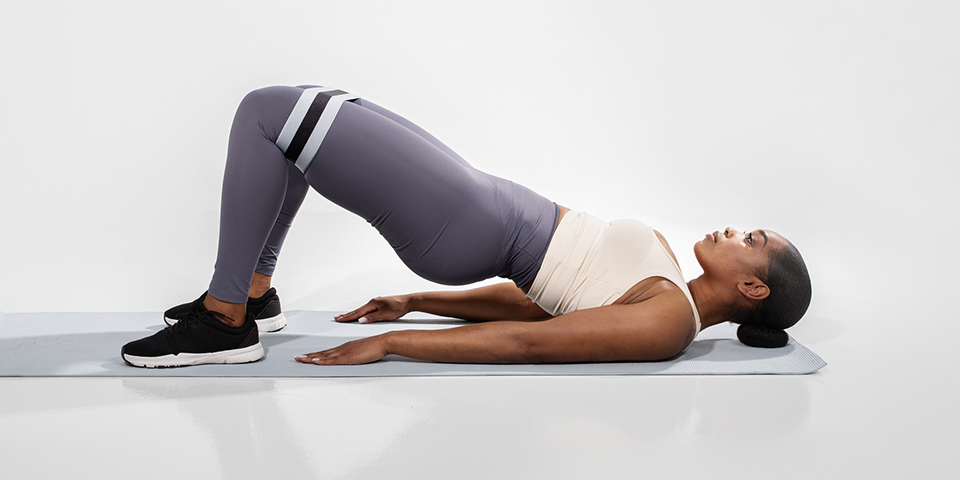Want better results in the posterior department? It’s time to start homing in on your butt muscles with glute isolation exercises.
Sure, compound exercises like squats and lunges are the foundation of lower body strength, and they do strengthen your glutes (along with your core, quads, hamstrings, and calves). But if a better butt is your top priority, you’ll need to supplement your training with isolated glute exercises.
To get you started, we’ve assembled a list of the best exercises to grow your glutes. But before you dive in, let’s brush up on a little basic anatomy.
Glute Muscles Anatomy

Your butt is primarily comprised of three separate muscles, all of which work together to extend (straighten) the hips, stabilize the pelvis, and rotate the thighs.
Gluteus maximus
As its name suggests, the gluteus maximus is the biggest of the three glute muscles. In fact, the gluteus maximus is the largest and most powerful muscle in the whole body. It’s also superficially positioned, which means it’s responsible for the butt’s shape and size.
But it’s not all about appearances; the gluteus maximus plays a critical role in hip extension and thigh rotation. (You couldn’t run, jump, climb stairs, or even stand up without functional gluteus maximus muscles.)
It originates at the pelvis and sacrum and inserts into the top of the thigh bone and the iliotibial tract (a.k.a. the IT band).
Gluteus medius
The fan-shaped muscle located to the side of the gluteus maximus is the gluteus medius. The gluteus medius is a hip stabilizer and leg abductor, meaning it draws the leg away from the body’s midline. It also helps rotate the thigh.
Originating from the ilium, the gluteus medius inserts into the top of the thigh bone.
Gluteus minimus
Small in size but big in function, the gluteus minimus is nestled beneath the gluteus medius and assists the larger hip stabilizer in leg abduction, thigh rotation, and pelvic alignment.
The gluteus minimus also originates at the ilium and inserts into the thigh bone.
10 Best Glute Isolation Exercises
The 10 glute-focused exercises below are among the best for building mass and strength. Incorporate one or more of them in your next workout.
1. Glute bridge
This beginner-friendly isolated glute exercise builds strength using just your body weight. To increase the level of difficulty, isolate one side of the body by floating a foot above the ground.
- Lie on your back, arms down by your sides. Bend your knees and plant your feet flat on the floor.
- Pull in through your navel to brace your core muscles and then squeeze your glutes to press your hips up so your body forms a straight line — no arching — from knees to shoulders.
- Keep your head on the floor and eyes focused on the ceiling.
- Hold the position for a beat, and then lift and lower and repeat.
2. Hip thrust
The hip thrust allows you to add external resistance (and a lot of it) while isolating the glutes, which means more muscle activation and better booty-building results.
- Sit on the floor with your back against the long edge of a gym bench and your feet flat on the floor (if using weights place a barbell across your waist). The bench’s pad should be positioned just under your shoulder blades.
- Engage your core and push through your heels to lift your hips toward the ceiling, keeping your chin tucked to prevent your back from arching excessively.
- At the top of the movement, squeeze your glutes, and then slowly lower your butt back to within a few inches of the floor before repeating.
3. Lateral band walk
The side-to-side motion of the lateral band walk targets the gluteus medius and gluteus minimus, which are often weak — even in active individuals.
- Fit a looped resistance band around your legs just above both knees, and stand with your feet together.
- Keeping your back flat and abs engaged, push your hips back, bend your knees, and lower your body into a squat, shifting your weight toward your heels.
- Maintain the squat as you simultaneously raise your hips several inches and step your right foot out to the right, then lower your hips fully.
- Again raise your hips several inches as you bring your left foot together with your right, and lower again fully, maintaining tension in the band so that your knees don’t cave inward.
- Repeat to the opposite side, alternating sides for reps. Perform equal reps on each side.
4. Side leg lift
This floor exercise may look retro, but its glute activation couldn’t be more relevant. Laterally lifting the leg fires up the hip abductors (the gluteus medius and gluteus minimus), which work to stabilize the pelvis.
- Lie on your right side with your forearm supporting your upper body, your left leg straight, and your head right leg at a 90 degree angle.
- Keeping your core engaged, slowly lift your top leg until you feel your hips begin to tilt upward.
- Pause, and then lower your top leg to the starting position. Complete all reps and then switch sides, performing equal reps on both.
5. Donkey kick
The donkey kick can help you improve mobility as you build muscle in your glute max. Lift your leg as high as you can during this hip extension exercise while maintaining maximum tension on your glutes.
- Get down on all-fours, with your hands directly below your shoulders and knees directly below your hips. Your back should be flat, your neck neutral.
- Keeping your arms straight, core engaged, and knees bent 90 degrees, raise your right knee off the floor and press the sole of your right foot up toward the ceiling. Squeeze your right glute (butt muscle) as hard as you can at the top of the movement.
- Reverse the move, lowering your right knee to the starting position.
- Repeat for the prescribed number of reps, making sure to perform an equal number with each leg.
6. Fire hydrant
What the fire hydrant exercise lacks in elegance it more than makes up for in glute strengthening. Laterally lifting the leg specifically targets the gluteus medius and gluteus minimus and develops stability in the hip’s full range of motion.
- Start on all fours with your hands under your shoulders and your knees under your hips. This is your starting position.
- Keeping your hips level and your core engaged (see below for more on that), raise your right knee out to the side as high as you can, and hold for 1 second.
- Lower your right leg to return to the starting position, and repeat for a total of 15 reps. Then switch sides and repeat the sequence.
7. Clamshell
The seemingly simple clamshell exercise is actually quite versatile. It can be performed with or without resistance, and minor changes to body positioning and leg movement allow you to target different glute muscles.
- Lie on your right side with your feet and hips stacked, your knees bent 90 degrees, and your head resting on your right arm.
- Draw your knees in toward your body until your feet are in line with your butt. Place your left hand on your left hip to ensure it doesn’t tilt backward. This is your starting position.
- Keeping your abs engaged and your feet together, raise your left knee as far as you can without rotating your hip or lifting your right knee off the floor.
- Hold for 1 second, squeezing your glutes at the top of the move, before slowly lowering your left knee to the starting position.
- Continue for reps, then repeat on the other side.
8. Frog pump

The frog pump’s unique sole-to-sole foot positioning removes your leg strength from the equation, requiring you to use your glute muscles to lift your hips.
- Lie on your back, arms by your sides, palms facing down. Alternatively, you can make fists with your hands, rest your elbows on the floor, and lift your fists up so that your forearms are perpendicular to the floor.
- Bend your knees and press the soles of your feet together so that your legs create a “frog legs” or “butterfly” shape.
- Pressing the outer edges of your feet against the floor, engage your core and use your glutes to lift your hips. Make sure your shoulders and upper back remain anchored to the floor.
- Pause, then slowly lower the hips to the floor. Repeat.
9. Lateral step-up

The lateral step-up uses an everyday, functional movement — stepping up onto an elevated surface — to strengthen the gluteus medius and gluteus minimus.
- Stand with your right side facing a bench or box that’s about knee height, holding a pair of dumbbells at arms’ length by your sides, palms facing in.
- Place your right foot on the middle of the bench. This is the starting position.
- Keeping your chest up and core engaged, push your body up with your right leg until it’s straight (don’t let your left foot touch the bench).
- Pause, and then lower your body back to the starting position. Perform equal reps on both sides.
10. Cable side leg lift
This leg lift variation challenges your balance while engaging the hip stabilizers (the gluteus medius and gluteus minimus) on both the standing and working leg.
- Select a light weight stack on a cable machine, and slide the pulleys down to the lowest pin.
- Strap a velcro cuff cable attachment around your left ankle. Stand with your right shoulder facing the machine, and hold onto the upright of the machine for stability. This is your starting position.
- Keeping your legs straight and core engaged, lift your left leg directly out to the side as high as you can go without tilting your pelvis or upper body.
- Slowly lower your leg back down to the starting position. Repeat for reps, then switch sides.
Tips to Make Your Glute Workouts More Effective
Glute isolation exercises only work if they’re done correctly and are part of a more comprehensive health and fitness plan. To ensure you’re optimizing your glute workouts, consider the following tips.
1. Activate your glutes
It may sound obvious, but when performing glute isolation exercises, make sure you’re actually activating your glutes and not allowing other muscles (especially in the back and legs) to compensate.
Warming up the glutes before a workout can help, as can using a mirror and manual cues (e.g., tapping your glutes to remind them to “turn on”). Also, don’t underestimate the mind-body connection; when doing an isolated glute exercise, think about the glutes contracting.
2. Vary your exercises
As noted above, the glutes are comprised of three separate muscles, and different exercises are designed to target different muscles. If you’re doing the same few movements over and over again, you may be neglecting certain areas (and leaving glute strength on the table).
Be sure that each glute workout includes exercises that engage the gluteus maximus, gluteus medius, and gluteus minimus, and switch up your routine every few weeks.
3. Prioritize recovery

The benefits of strength training happen in the recovery periods that follow a workout. When you’re at rest, the body has an opportunity to repair and rebuild the muscles that were damaged during exercise.
So, if you habitually shortchange sleep or never take a day off from the gym, you won’t reap the rewards of your hard work.
4. Stay consistent
As with any fitness endeavor, consistency is critical. A single glute workout here and there won’t lead to lasting results. But if you train your glutes two to three times per week, you will start to notice changes in strength, stability, and appearance.
5. Consume adequate protein (and carbohydrates and fat)
Proper nutrition is critical to building and maintaining strength. You need protein to fuel muscle growth, but you also need carbohydrates and fat for energy and countless other biological processes.
Your best bet is to stick to a balanced diet of fresh fruits and vegetables, whole grains, and lean proteins. (And try to avoid any diet trend encouraging you to omit entire food groups.)
Benefits of Glute Exercises
Strength training is always a good idea, as it can improve bone density, counteract age-related sarcopenia (muscle loss), help with weight loss and maintenance, and make it easier to perform everyday, functional movements.
And on top of all of that, specifically targeting the glutes has some unique benefits.
1. A shapelier rear
It may not be the noblest reason to do glute isolation exercises, but the aesthetic benefits can be motivating. Prioritizing your glutes in your fitness routine will lead to an increase in muscle mass, which can help create a more rounded and shapelier butt.
2. Pelvic stability

Strengthening the glute muscles — especially the gluteus medius and gluteus minimus, which are hip abductors — can help stabilize the hips and pelvis. This creates a strong foundation for efficient movement, whether you’re walking, running, climbing stairs, or playing sports.
3. Speed and power
Whether you want to jump higher during a pick-up basketball game or catch the elevator before the doors close, strengthening your glutes will give you more speed and power, quicker acceleration, and better movement control.
4. Improved posture and fewer injuries
Weak glutes often lead to painful movement compensations in the lower back and are connected to chronic ankle sprains and knee pain. Bolstering glute strength can help improve posture and minimize factors that increase the risk of injuries.
5. Better balance
Strong glutes allow you to maintain your balance, especially as you transfer your weight from one leg to the other. This can help you avoid falls (the risk of which increases as you age) and manage obstacles (e.g., uneven ground, raised curbs, potholes, etc.) as you navigate your surroundings.
Compound vs Isolation Exercises

While compound exercises work multiple joints and engage more than one muscle group, isolation exercises typically move just one joint and home in on a singular muscle or muscle group.
For example, the squat requires you to hinge at the hips and bend the knees and ankles. It targets the glutes but also engages the quads, hamstrings, calves, and core muscles. In contrast, the clamshell isolates the gluteus medius and gluteus minimus by focusing only on hip rotation.
Both compound and isolation exercises have value; the “best” exercise depends on your goal. If you want to lift heavy loads and build functional strength that will carry over into your everyday life, compound lifts are the way to go.
They also allow you to work efficiently, as you’re engaging more than one muscle group with each rep.
If you’re looking to develop a specific muscle or address a muscle imbalance, isolation exercises allow you to narrow your focus. For example, biceps curls, the quintessential isolation exercise, will strengthen your biceps but not much else.
And on its own, that aforementioned clamshell may not add pounds of muscle mass to your booty, but it will strengthen the gluteus minimus and gluteus medius, which can be hard to target with compound lifts.
